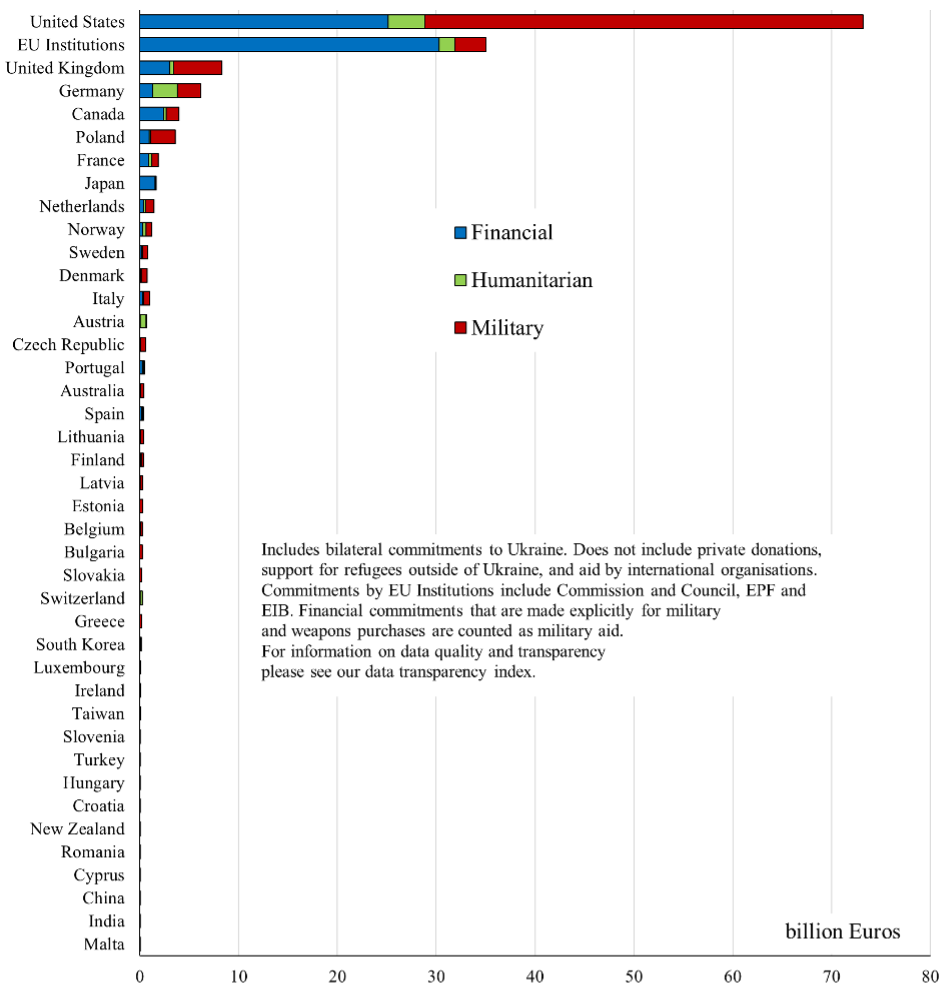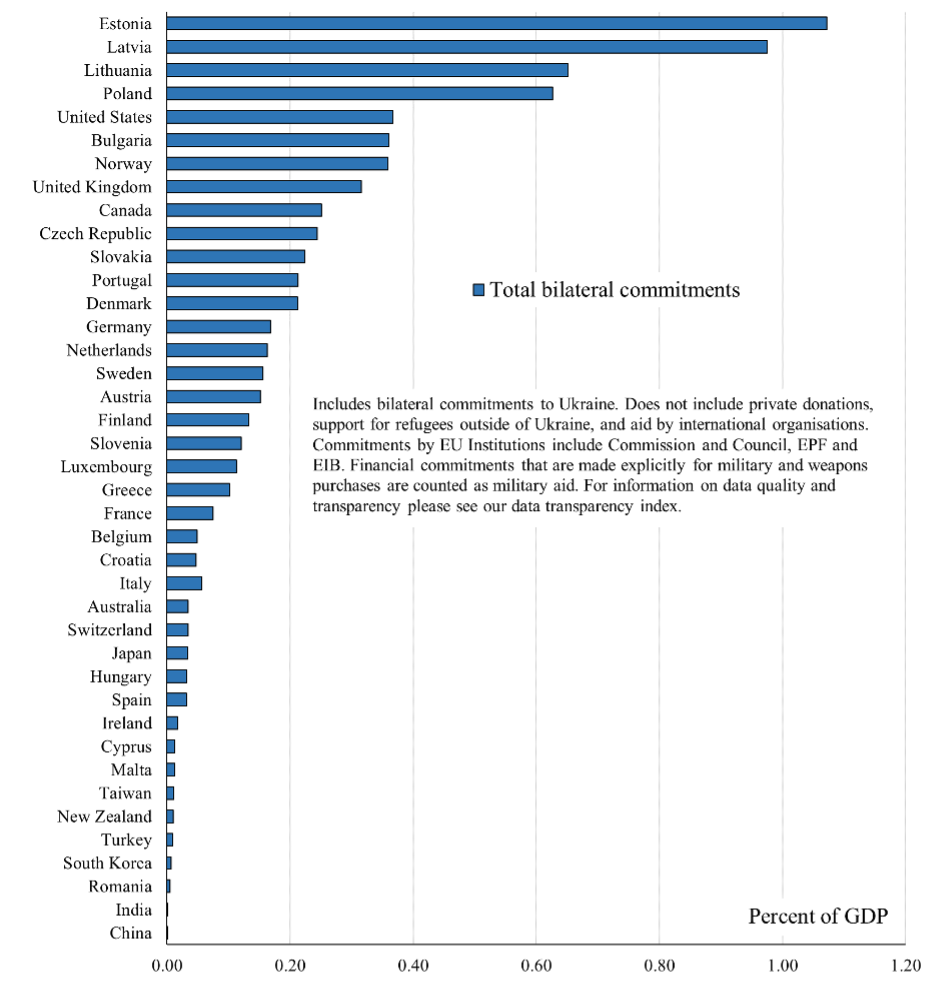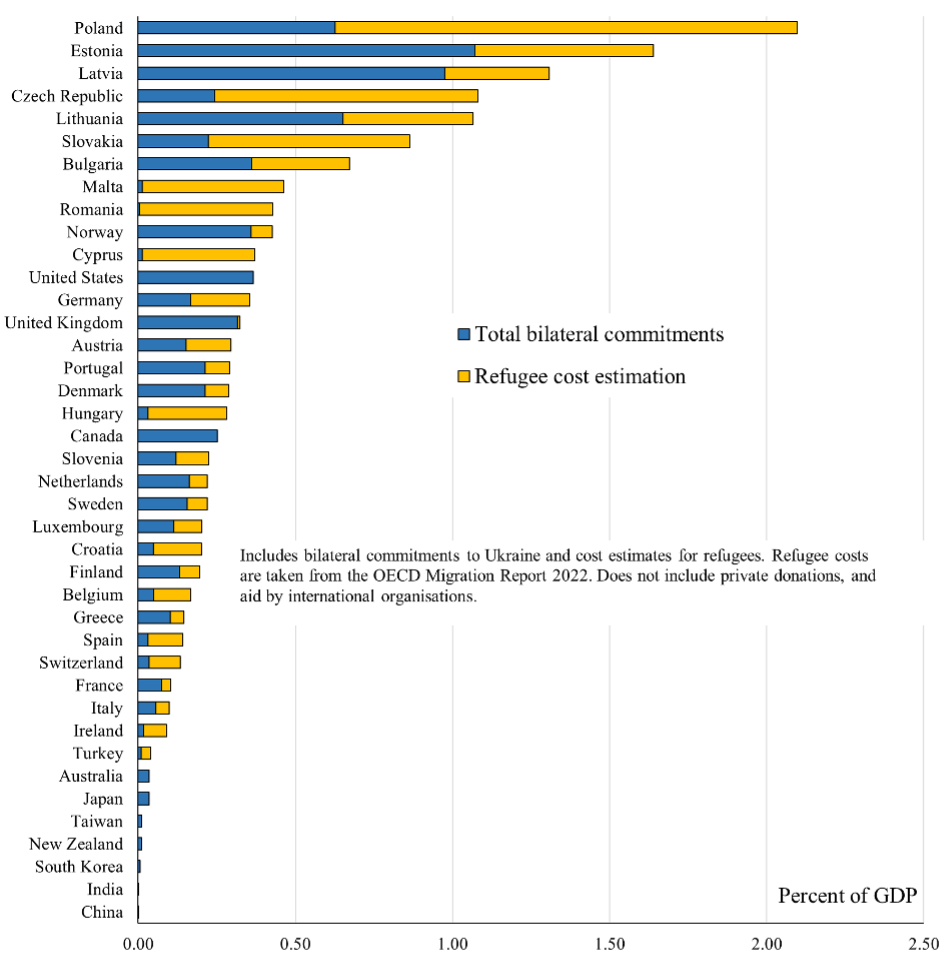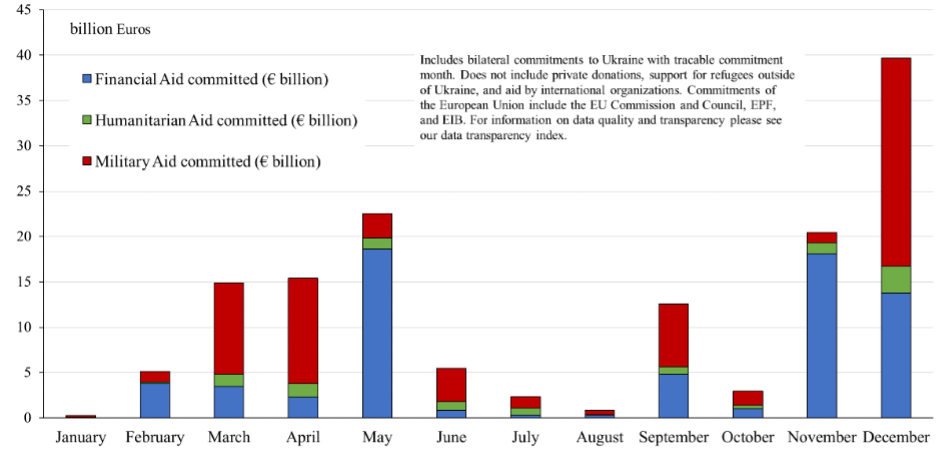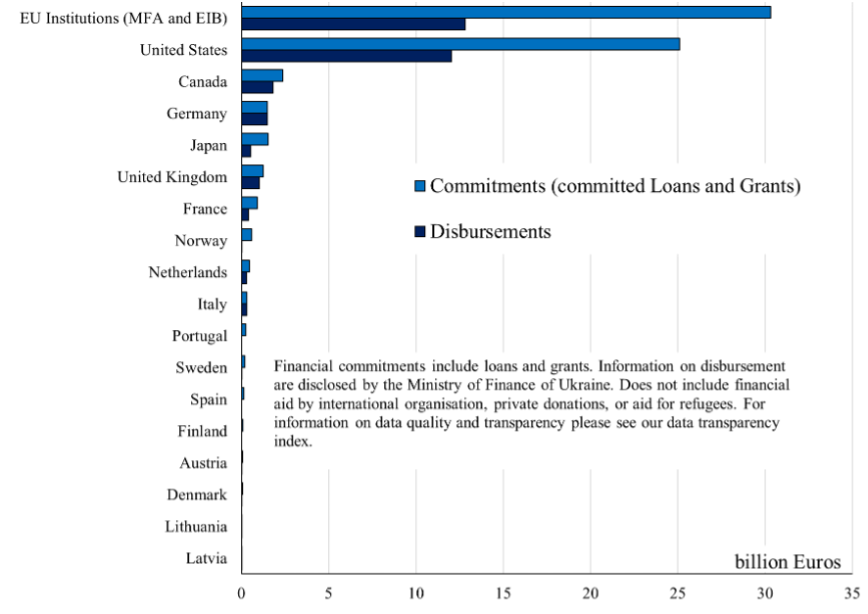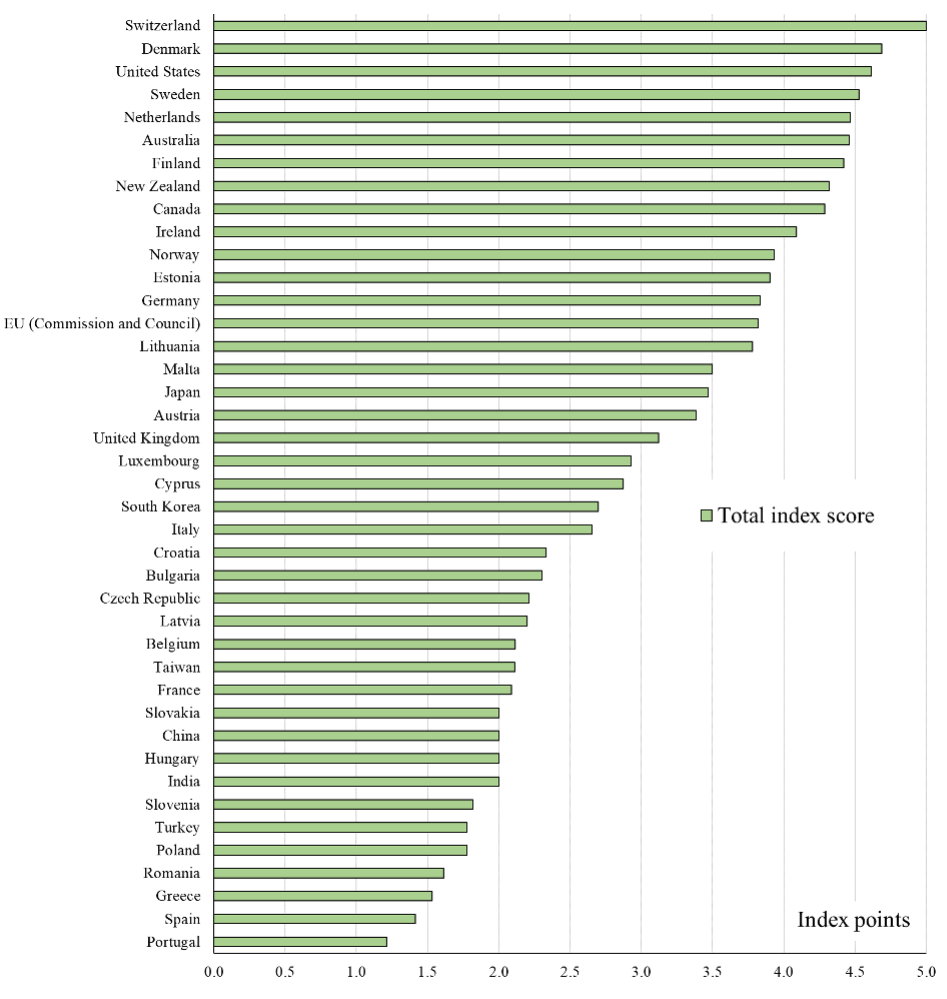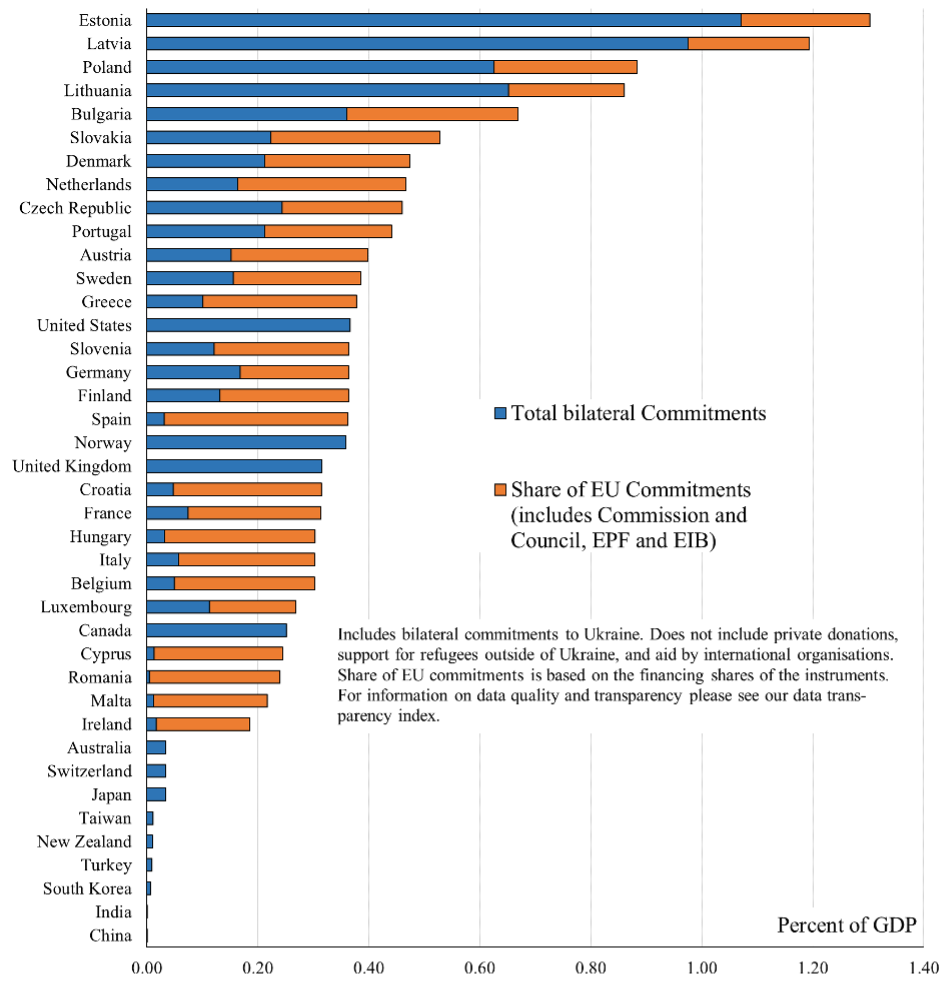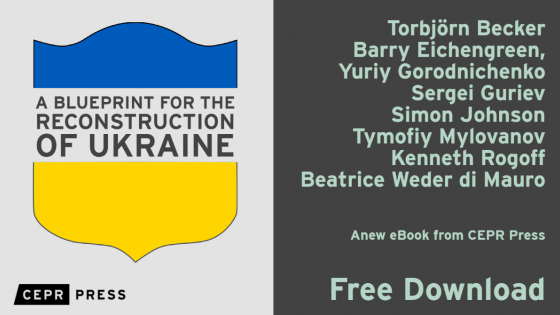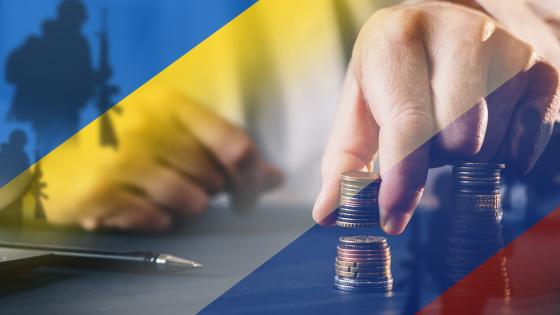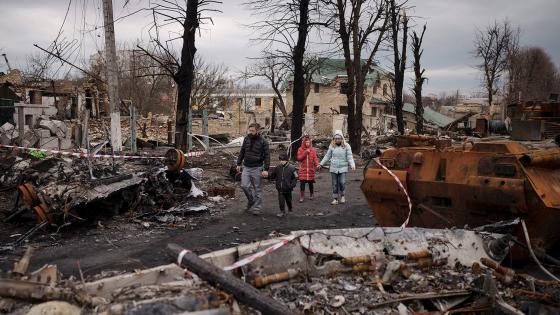Russia’s attack on Ukraine has caused staggering human suffering and destruction. Since the full-scale invasion started, many Western leaders have pledged to ‘stand with Ukraine’ and announced major military and humanitarian support. In this column, I ask the following questions: What do the numbers say? How large is the support for Ukraine? Who are the most supportive governments? And what type of support do countries offer – military, humanitarian, and/or financial aid? The answer to these questions is often imprecise.
In the initial months of the war, the debate mainly focused on sanctions and other measures to hurt Russia (e.g. Bachmann et al. 2022); less attention was devoted to measures in support of Ukraine. Recent months, however, have a series of important contributions on aid to Ukraine and the required reconstruction efforts (Becker et al. 2022, Rashkovan and Eichengreen 2022, Shapoval et al. 2022). Nevertheless, systematic data remain scarce.
A systematic database on foreign support to Ukraine
The Ukraine Support Tracker by the Kiel Institute of the World Economy lists and quantifies the support of 40 donor governments plus that of the EU institutions (Trebesch et al. 2023).
In the most recent update, we trace aid commitments between 24 January 2022 (the day several NATO countries put their troops on alert) and 15 January 2023. Our main contribution is to quantify the scale of aid to Ukraine in millions of euros or as percent of donor GDP, which allows for systematic comparisons across countries. We trace both financial and in-kind transfers and create a comprehensive ‘consensus’ database that brings together information from official government sources, existing lists of Ukraine aid, and media reports, now covering more than 1,000 individual donations. To quantify in-kind aid such as weapon shipments or ‘tonnes of foodstuff’, we assign a monetary value to each item using market prices and data on previous instances of international aid deliveries. The resulting database with sources is fully and freely available.
We mainly focus on bilateral (government-to-government) commitments transferred to Ukraine. This means that not all types of support are covered. In particular, in our baseline figures we do not add the costs of helping refugees who have fled Ukraine (but we do show results in additional figures). We also do not count private donations, mainly because reliable information across countries is not available. For international financial institutions like the IMF or the World Bank, we do track their support but report these results separately.
A main challenge for the quantification of aid flows is data transparency. We do our best to list and quantify all support measures that have become publicly known. But not all donations do become public. For better comparability across countries, we therefore create a ‘data transparency’ index that measures how detailed each government’s information on their Ukraine support is. We find considerable variation across countries, with some governments – such as France, Spain, and Poland – being rather opaque on their support (see Appendix Figure A1). The average scope of information sharing, however, is high, with often very detailed lists on donations and data availability, and transparency has clearly improved over the course of the war.
The US and Eastern European countries stand out
Figure 1 shows the first key insight – a breakdown of aid to Ukraine by donor group. In total, we trace over €144 billion in government-to-government commitments from 24 January 2022 until 15 January 2023. The US is by far the largest bilateral supporter of Ukraine, having committed €73.18 billion, more than 50% of the total commitments in our database. EU country governments committed a total of €20.1 billion bilaterally, plus €29.92 billion through the European Commission and Council, €3.1 billion via the European Peace Facility, and €2 billion through the EIB. This brings total EU commitments to €55.12 billion. It is remarkable that the US alone has committed considerably more than all EU countries combined, in whose immediate neighbourhood the war is raging.
Figure 1 Aid commitments to Ukraine across donor groups, 24 January 2022 to 15 January 2023 (in € billion)
Note: This figure shows total bilateral aid commitments to Ukraine across different donor groups between 24 January 2022 and 15 January 2023. Other donor countries include the Anglo-Saxon countries (except the US), as well as China, Japan, South Korea, Taiwan, Turkey, Norway and Switzerland and India.
Figure 2 shows that there is striking variation in the bilateral support across countries. The US clearly stands out, followed by the EU institutions, and then the UK, and Germany. When we assign the EU commitments to the EU member countries, the overall patterns look similar, although some countries – such as Italy and Spain – move up the ranking considerably (see Appendix Figure A2).
Figure 2 Total bilateral commitments by type of assistance, 24 January 2022 to 15 January 2023 (€ billion)
Note: This figure shows total bilateral aid commitments to Ukraine across donors in € billion (covering 24 January 2022 to 15 January 2023). Each bar shows the type of assistance, i.e., financial (blue), humanitarian (green), and military (red) aid. Cost estimates for hosting refugees are added in Figure 7 below.
When measured as a percentage of donor GDP, the support of Eastern European countries stands out (Figure 3). The Baltic countries, Poland, the Czech Republic, and Bulgaria rank high, but the US is also among the top five donors when measured as a percentage of country GDP. The large US commitments, both in absolute and relative terms, are striking.
Figure 3 Bilateral commitments as a percentage of donor country GDP
Note: GDP data for 2022 are from the World Bank.
It is also striking that some of the richest Western European countries appear in the bottom third. Spain and Italy, for example, made bilateral commitments of just 0.06% and 0.03% of their GDP, respectively, according to our data. Other large countries such as Poland, the US, and the UK have committed up to ten times as much aid as a share of GDP. As shown in Figure A1, Spain and Italy are non-transparent, but even if the true scope of their support was twice as high than what has become publicly known – an unlikely scenario – then they would still rank in the bottom half. The same is true when reassigning EU-level aid to each EU country and then recalculating aid as a percentage of GDP (Figure A3).
Once we add estimates on the cost of hosting Ukrainian refugees over the year 2022, the distance between Eastern and Western European countries grows further (Figure 4, using estimates on refugee costs by the OECD 2022). Now eight out of the top ten supporters of Ukraine are Eastern European countries, while countries like France, Italy and Spain rank even further down.
Figure 4 Adding the cost of hosting refugees (total support as a percentage of donor GDP)
Note: This figure complements our main Figure 2 by adding estimates on the cost of hosting refugees from OECD (2022). GDP data (current US$) are taken from the World Bank.
New commitments are cyclical and often arrive with a delay
Figure 5 tracks aid over time and shows that commitments have been highly cyclical in 2022. After a strong increase in pledges after February, newly announced aid fell to almost zero over the summer, only to increase strongly again in the end of the year.
Figure 5 Total bilateral assistance, January to December 2022 (€ billion)
Note: This figure shows total bilateral aid commitments to Ukraine for all entries for which the commitment month is known.
Figure 6 Foreign budgetary support: Commitments versus disbursements, 24 January 2022 to 15 January 2023 (billion euros)
Note: This figure shows a ranking of financial donors, measured by the volume of external grants and loans given for budgetary support to the government of Ukraine (in billion euros). Light blue bars indicate commitments (from our dataset), while the darker blue bars show disbursements (using data from the Ministry of Finance of Ukraine).
Finally, we find that promised commitments are often disbursed with a delay. This can best be shown for financial aid, as we can combine our own data on commitments with detailed disbursement data provided by the Ukrainian Ministry of Finance. Figure 6 shows a very large gap between commitments and disbursements, in particular for the two largest donors – the EU and the US – which have each disbursed less than 50% of their total financial pledges.
The cyclicality and delays in foreign support shows the urgent need for better coordination of Western aid to Ukraine. Thus far, aid flows have been hard to predict and aid announcements often erratic and uncoordinated. A central agency and/or platform would be a major improvement to allow Ukraine to plan ahead and make sure its most urgent financial, military, and humanitarian needs are addressed (see also Rashkovan and Eichenreen 2022).
References
Bachman, R, D Baqaee, C Bayer, M Kuhn, A Löschel, B Moll, A Peichl, K Pittel and M Schularick (2022), “What if Germany is cut off from Russian energy?”, VoxEU.org, 25 March.
Becker, T, B Eichengreen, Y Gorodnichenko, S Guriev, S Johnson, T Mylovanov, K Rogoff (2022), A Blueprint for the Reconstruction of Ukraine, CEPR Press.
Eichengreen, B and V Rashkovan (2022) “How to organise aid”, in Y Gorodnichenko, I Sologoub and B Weder di Mauro (eds), Rebuilding Ukraine: Principles and Policies, CEPR Press.
Nell, J, O Bilan, T Becker, Y Gorodnichenko, T Myolavanov and N Shapoval (2022) “Financing Ukraine’s victory”, VoxEU.org, 29 September.
IISS – International Institute for Strategic Studies (2022), The Military Balance 2022, Taylor & Francis.
OECD (2022), International Migration Outlook 2022, OECD Publishing.
Trebesch, C, A Antezza, K Bushnell, A Frank, P Frank, L Franz, I Kharitonov, B Kumar, E Rebinskaya and S Schramm (2023) "The Ukraine Support Tracker: Which countries help Ukraine and how?", Kiel Working Paper No. 2218.
Appendix
Figure A1 Data Transparency Index
Note: This figure shows the data quality and transparency ranking for all donors. Higher index values indicate higher levels of data transparency (5 = best, 0 = least transparent). The index is based on 5 sub-indices on data quality and transparency by country, the first two being qualitative (0-1) and the remaining three being quantitative (share of items with detailed information):
1. Designated website (yes=1/no=0): Is there an official website on government aid to Ukraine?
2.Total value of commitments given (yes=1/no=0): Is the total sum of Ukraine support provided by the government?
3. Government information on individual items (share in percent): Share of committed individual items in our database for which we have an official source (shares from 0 to 1 computed for each country).
4. Monetary value of individual items given (share in percent): Share of committed individual items in our database for which we have a monetary value (shares from 0 to 1 computed for each country).
5 Exact number of weapons / military items disclosed (share in percent): Share of weapons and other in-kind military items committed for which we have the exact number of items (shares from 0 to 1 computed for each country).
The final index score per country is the sum of these 5 sub-indices. A score of 5 is the highest possible and suggests full data transparency, while 0 is the lowest possible score.
Figure A2 Reassigning EU-level aid to individual EU countries (billion euros)
Note: This figure (on bilateral aid in billion Euros) builds on the main Figure 2 but assigns EU-level commitments to each EU country using their respective donation shares. We no longer show the donor bar for “EU Institutions” as in Figure 4 and instead allot EU commitments across EU countries as follows: EU commitments (in particular European Peace Facility, Macro-Financial Assistance) is assigned based on each member country’s relative contribution to the EU budget. EIB commitments are assigned using each country’s weight in the EIB’s capital subscription shares.
Figure A3 Reassigning EU-level aid to individual EU countries (as a percentage of GDP)
Note: This figure shows aid commitments to Ukraine as a percentage of GDP. It builds on Figure 3, but reassigns EU aid shares to the individual EU countries.


